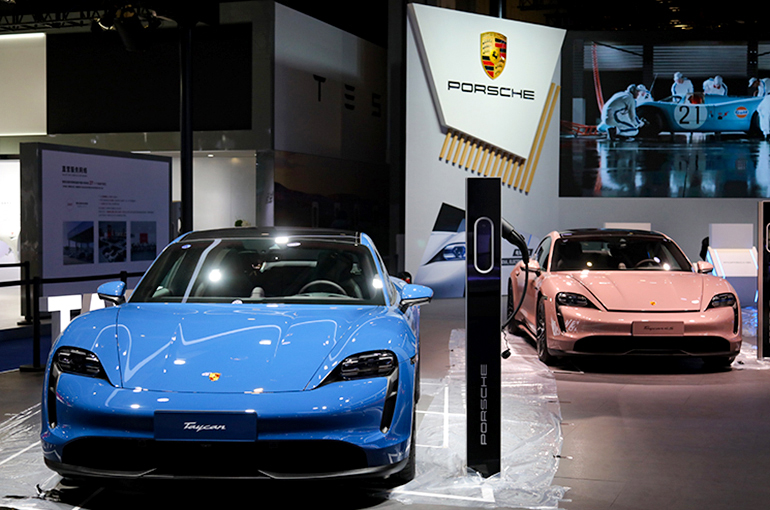 Porsche’s China Sales Sink Nearly 30% in First Half, Putting Brakes on Global Momentum
Porsche’s China Sales Sink Nearly 30% in First Half, Putting Brakes on Global Momentum(Yicai) July 9 -- Porsche’s sales in China plunged 28 percent in the first six months from the year before, dragging down the German luxury carmaker’s global performance, as it struggles to keep up with rapidly changing consumer preferences in the country.
Porsche’s global sales tumbled 6 percent in the six months ended June 30 year on year to 146,000 vehicles, the Stuttgart-based firm said yesterday. This is largely due to the sharp drop in sales in China where only 21,302 new cars were delivered over the period.
Porsche entered the Chinese market in 2001 and saw sales soar over the years. By 2015, China was Porsche’s biggest single market in the world. At its peak in 2021, Porsche’s annual sales in China approached 100,000 units. However, sales have declined year after year since then, with shipments plunging 28 percent in 2024 from the year before to just 56,900 vehicles.
At the 2024 earnings conference, Chief Executive Officer Oliver Blume attributed Porsche’s underperformance in China to the rapid changes in the market, saying that the firm has failed to keep pace with shifting consumer preferences.
The rise of Chinese brands has also eroded luxury carmakers’ share of China's booming new energy vehicle market. Porsche was one of the first ultra-luxury brands to launch pure electric vehicles. However, it has not developed any models specifically for the Chinese market and its current line-up has not met expectations. During this year's Shanghai Auto Show, Blume said that Porsche might halt EV sales in China altogether within the next two to three years.
In response to the downturn, Porsche plans to streamline its dealer network in China and step up local research and development. Porsche China CEO Alexander Pollich previously told Yicai that the firm will continue investing heavily in big, first-tier cities like Beijing, Shanghai and Guangzhou but in smaller markets where demand is weak, it will scale back.
Porsche had trimmed its sales network in China to around 140 outlets as of the end of last year. And it aims to bring that number down further to 100 outlets by 2027, depending on how the market evolves.
Editor: Kim Taylor